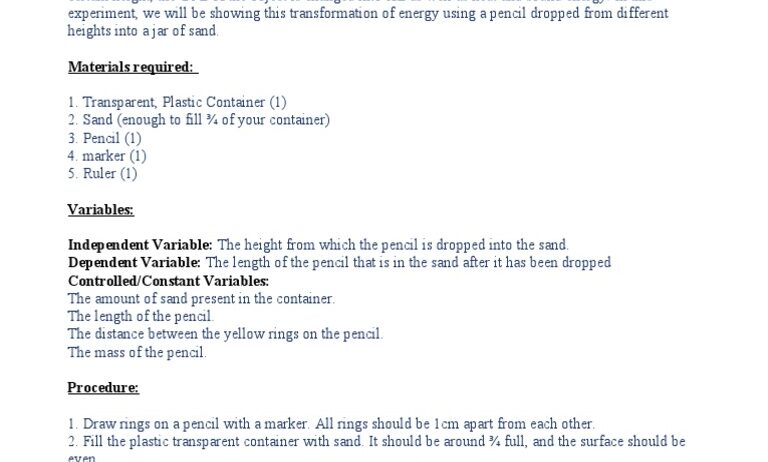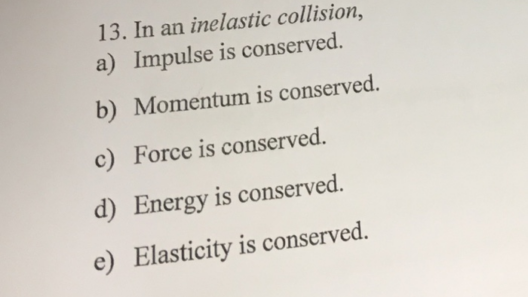Air resistance, also referred to as drag, pertains to the opposing force exerted by air molecules when an object moves through the atmosphere. This phenomenon is particularly salient in the realms of physics and engineering, as it presents a critical consideration in the conservation of energy, especially in motion. The principle of conservation of energy posits that energy cannot be created or destroyed, only transformed from one form to another. However, when analyzing the dynamics of moving objects, one must examine whether air resistance can be considered negligible or if it plays a substantial role in energy conservation.
The significance of air resistance in the context of conservation of energy becomes evident when assessed through various lenses—ranging from classical mechanics to aerodynamic principles. In ideal conditions, one might postulate that air resistance is negligible when calculating the conservation of mechanical energy. For example, in a vacuum where no air exists, a freely falling object converts potential energy to kinetic energy without any external interference. However, in real-world scenarios, air resistance invariably affects the motion of objects, necessitating a more nuanced exploration.
To understand the impact of air resistance, it is imperative to differentiate between laminar and turbulent flow. Laminar flow occurs when a fluid, such as air, moves in parallel layers, leading to less drag. Conversely, turbulent flow is characterized by chaotic and irregular motion that results in increased drag. The nature of airflow around an object significantly influences its velocity and, consequently, its energy efficiency. When an object experiences turbulent airflow, the energy transformations are disrupted, leading to energy losses in the form of heat and sound.
Consider a scenario involving a projectile—such as a basketball thrown into the air. Initially, its potential energy is maximal when held at a certain height. As the ball is released, potential energy transforms into kinetic energy. In an idealized model, one could ignore air resistance, calculating how high the ball would travel based solely on gravitational potential energy. However, in reality, air resistance acts against the ball’s ascent. This frictional force dissipates energy that would otherwise contribute to the ball’s upward motion, resulting in a lower maximum height than the theoretical calculations suggest. It highlights that air resistance is not merely a minor detail but a considerable factor in energy conservation for practical applications.
The analysis of air resistance becomes even more pertinent when evaluating various vehicles in motion. Consider a car driving on a highway. The engine converts chemical energy into mechanical energy, propelling the vehicle forward. However, as the car accelerates, air resistance increases, ultimately requiring the engine to expend more energy to maintain speed. The power consumed to overcome drag becomes part of the overall energy budget. Efforts in automotive design often seek to enhance aerodynamic efficiency by reducing drag, which in turn conserves energy and improves fuel efficiency.
Another facet of air resistance lies in its relation to terminal velocity, which occupies a critical position in the discussion of falling objects. As an object falls, it accelerates until the force of gravity is counteracted by air resistance. At this juncture, it achieves terminal velocity—where the net force is zero, and the object falls at a constant speed. This equilibrium elucidates how air resistance converts kinetic energy into heat during descent, contributing to the overall energy transformation process while adhering to the conservation principle.
Moreover, in fields such as aerospace engineering, air resistance is meticulously accounted for through detailed calculations when designing aircraft. The intricacies of lift, drag, thrust, and weight are interrelated concepts that govern flight. Engineers utilize computational fluid dynamics to model airflow, allowing them to optimize aircraft design to reduce drag and enhance performance. This advanced understanding demonstrates that air resistance is a crucial consideration that directly impacts energy management in flight dynamics.
However, discussions around air resistance also invite considerations of scale. In macro-scale phenomena, such as falling trees or rockets launching into space, the influence of air resistance becomes notably substantial. Alternatively, in micro-scale environments, such as a small marble rolling down a slope, the impact of air resistance is often considered negligible. The rheological properties of the medium, the size of the object, and its velocity play decisive roles in determining whether air resistance warrants consideration in energy calculations.
Ultimately, while one might encounter scenarios or theoretical models in which air resistance can be discounted, its omnipresence in real-world applications underscores its undeniable influence on the conservation of energy. It exemplifies the complex interplay between various forces and energy forms, which cannot be disregarded in practical situations.
In conclusion, air resistance is not merely an ancillary force; it is a significant player in energy conservation discussions. Ignoring its effects leads to oversimplified models that fail to capture the intricacies of motion dynamics. By embracing the nuances of drag and its effect on energy transformations, one gains a more comprehensive understanding of the laws governing physical systems. The conservation of energy, while a steadfast principle, is nuanced and shaped profoundly by the realities of air resistance—inviting continued investigation and innovation in harnessing energy efficiently.








